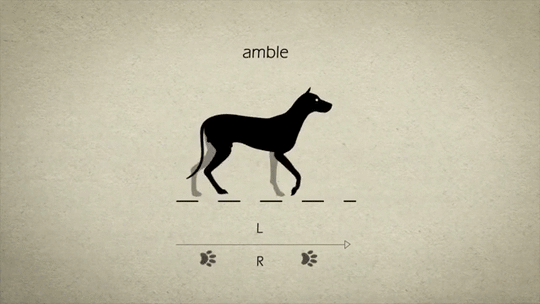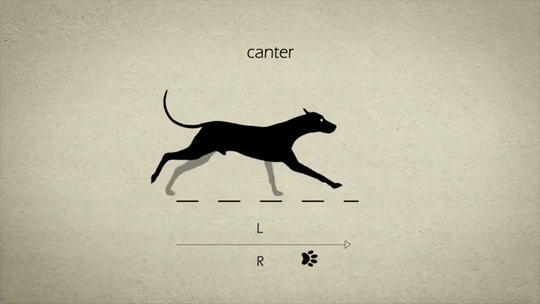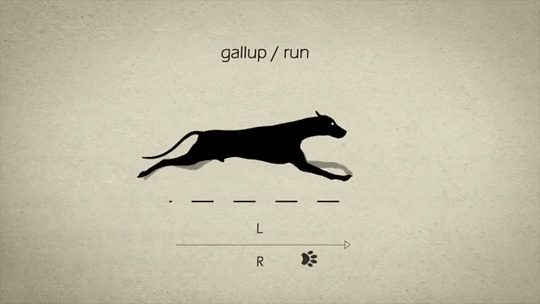A Sphere Made Out Of Straight Lines! Beautiful!
A sphere made out of straight lines! Beautiful!

Hypotrocoid
http://www.malinc.se/math/trigonometry/spirographen.php
More Posts from Mrvmt and Others
Glad to see your back. Love your work. As always, keep up the good job! And btw, nice covergirl photo ;)






Rough draft of a sculpture illustrating the electric field lines between two equal and opposite charges.
(Hi! I’m still alive, sorry for ghostin ya tumblr. I stopped posting because my reclusive tendencies have gotten really out of control over the past year or so, but I’m trying to take little baby steps to quittin my bullshit so bear with me! Still makin math art like crazy, so I thought I’d start with sendin u this lil ditty I whipped up a couple weeks ago. Plenty more where this came from, I promise!)
This beef just got REAL!





NDT just murdered B.o.B.
Wow, This was really intresting

One of my favorite gifs of all time!!!

periods
Got to love Geometry!
The Complex Geometry of Islamic Design
In Islamic culture, geometry is everywhere. You can find it in mosques, madrasas, palaces and private homes. This tradition began in the 8th century CE during the early history of Islam, when craftsman took preexisting motifs from Roman and Persian cultures and developed them into new forms of visual expression.

This period of history was a golden age of Islamic culture, during which many achievements of previous civilizations were preserved and further developed, resulting in fundamental advancements in scientific study and mathematics. Accompanying this was an increasingly sophisticated use of abstraction and complex geometry in Islamic art, from intricate floral motifs adorning carpets and textiles, to patterns of tile work that seemed to repeat infinitely, inspiring wonder and contemplation of eternal order.

Despite the remarkable complexity of these designs, they can be created with just a compass to draw circles and a ruler to make lines within them, and from these simple tools emerges a kaleidoscope multiplicity of patterns. So how does that work? Well, everything starts with a circle. The first major decision is how will you divide it up? Most patterns split the circle into four, five or six equal sections. And each division gives rise to distinctive patterns.

There’s an easy way to determine whether any pattern is based on fourfold, fivefold, or sixfold symmetry. Most contain stars surrounded by petal shapes. Counting the number of rays on a starburst, or the number of petals around it, tells us what category the pattern falls into. A star with six rays, or surrounded by six petals, belongs in the sixfold category. One with eight petals is part of the fourfold category, and so on.

There’s another secret ingredient in these designs: an underlying grid. Invisible, but essential to every pattern, the grid helps determine the scale of the composition before work begins, keeps the pattern accurate, and facilitates the invention of incredible new patterns. Let’s look at an example of how these elements come together.

We’ll start with a circle within a square, and divide it into eight equal parts. We can then draw a pair of criss-crossing lines and overlay them with another two. These lines are called construction lines, and by choosing a set of their segments, we’ll form the basis of our repeating pattern.

Many different designs are possible from the same construction lines just by picking different segments. And the full pattern finally emerges when we create a grid with many repetitions of this one tile in a process called tessellation.

By choosing a different set of construction lines, we might have created this any of the above patterns. The possibilities are virtually endless.

We can follow the same steps to create sixfold patterns by drawing construction lines over a circle divided into six parts, and then tessellating it, we can make something like the above.

Here’s another sixfold pattern that has appeared across the centuries and all over the Islamic world, including Marrakesh, Agra, Konya and the Alhambra.

Fourfold patterns fit in a square grid, and sixfold patterns in a hexagonal grid.

Fivefold patterns, however, are more challenging to tessellate because pentagons don’t neatly fill a surface, so instead of just creating a pattern in a pentagon, other shapes have to be added to make something that is repeatable, resulting in patterns that may seem confoundingly complex, but are still relatively simple to create.

This more than 1,000-year-old tradition has wielded basic geometry to produce works that are intricate, decorative and pleasing to the eye. And these craftsman prove just how much is possible with some artistic intuition, creativity, dedication along with a great compass and ruler.
Just the ruler missing. Love to draw with those tools!

Wow, “ For a photon, its entire existence is instantaneous. “ , that put things in perspective!






Ask Ethan #109: How do photons experience time?
“[L]ight takes about 8 minutes to travel from the sun to earth. Light travels at the speed of light. If you do that relativity kicks in. So my question is, how much time passes for the photons traveling? In other words, how much have the photons aged when the reach the earth? Thanks for considering this.”
Travel at any constant speed, at rest, slowly, or near the speed of light, and you’ll experience time passing at the same rate it always does: one second per second. If someone else is moving relative to you, they’ll see your clock run slow (and you’ll see theirs run slow) depending on how quickly you move relative to one another. But what about a photon, which moves at the speed of light? From your point of view, no matter what your motion is, you won’t see time pass for it at all, and it won’t even experience time! For a photon, its entire existence is instantaneous.

Finally Vihart post a video again!







Animal Gaits for Animators by Stephen Cunnane
Down the rabbithole. :)
/|\ / \ hello it is I, twocubes
-
 mountaingoat0112 liked this · 1 year ago
mountaingoat0112 liked this · 1 year ago -
 freespirit-78 liked this · 4 years ago
freespirit-78 liked this · 4 years ago -
 birharua liked this · 5 years ago
birharua liked this · 5 years ago -
 studyinggoalsandstuff reblogged this · 6 years ago
studyinggoalsandstuff reblogged this · 6 years ago -
 bionelly2 reblogged this · 6 years ago
bionelly2 reblogged this · 6 years ago -
 bionelly2 liked this · 6 years ago
bionelly2 liked this · 6 years ago -
 the-rift1 liked this · 6 years ago
the-rift1 liked this · 6 years ago -
 sevenfactorial reblogged this · 6 years ago
sevenfactorial reblogged this · 6 years ago -
 tens-tensor-tensest liked this · 6 years ago
tens-tensor-tensest liked this · 6 years ago -
 toasterunderthesea liked this · 6 years ago
toasterunderthesea liked this · 6 years ago -
 vacuously-true reblogged this · 6 years ago
vacuously-true reblogged this · 6 years ago -
 beweirdandyourself liked this · 6 years ago
beweirdandyourself liked this · 6 years ago -
 wainedings liked this · 6 years ago
wainedings liked this · 6 years ago -
 74310-fheu liked this · 6 years ago
74310-fheu liked this · 6 years ago -
 1hl-blog reblogged this · 6 years ago
1hl-blog reblogged this · 6 years ago -
 drellen-is-strange liked this · 7 years ago
drellen-is-strange liked this · 7 years ago -
 pisnot314 reblogged this · 7 years ago
pisnot314 reblogged this · 7 years ago -
 mswscw-blog liked this · 7 years ago
mswscw-blog liked this · 7 years ago -
 jonessenoj-blog liked this · 7 years ago
jonessenoj-blog liked this · 7 years ago -
 avatarwefa-blog liked this · 7 years ago
avatarwefa-blog liked this · 7 years ago -
 ava-physics-blog reblogged this · 7 years ago
ava-physics-blog reblogged this · 7 years ago -
 ava-physics-blog liked this · 7 years ago
ava-physics-blog liked this · 7 years ago -
 gr8-forestspirits liked this · 8 years ago
gr8-forestspirits liked this · 8 years ago -
 hamilto-trash556-blog liked this · 8 years ago
hamilto-trash556-blog liked this · 8 years ago -
 funcoolmathgames reblogged this · 8 years ago
funcoolmathgames reblogged this · 8 years ago -
 funcoolmathgames reblogged this · 8 years ago
funcoolmathgames reblogged this · 8 years ago -
 prospectusxx liked this · 8 years ago
prospectusxx liked this · 8 years ago -
 itisillogical reblogged this · 8 years ago
itisillogical reblogged this · 8 years ago -
 yxwcom liked this · 8 years ago
yxwcom liked this · 8 years ago -
 gurultulucumleler liked this · 8 years ago
gurultulucumleler liked this · 8 years ago -
 auroral-melody reblogged this · 8 years ago
auroral-melody reblogged this · 8 years ago -
 auroral-melody liked this · 8 years ago
auroral-melody liked this · 8 years ago -
 forestdweller1944 liked this · 8 years ago
forestdweller1944 liked this · 8 years ago -
 breebraw-blog reblogged this · 8 years ago
breebraw-blog reblogged this · 8 years ago -
 breebraw-blog liked this · 8 years ago
breebraw-blog liked this · 8 years ago -
 simone-23-02 liked this · 8 years ago
simone-23-02 liked this · 8 years ago -
 hkboy44 liked this · 8 years ago
hkboy44 liked this · 8 years ago -
 comeoutwetter-blog liked this · 8 years ago
comeoutwetter-blog liked this · 8 years ago